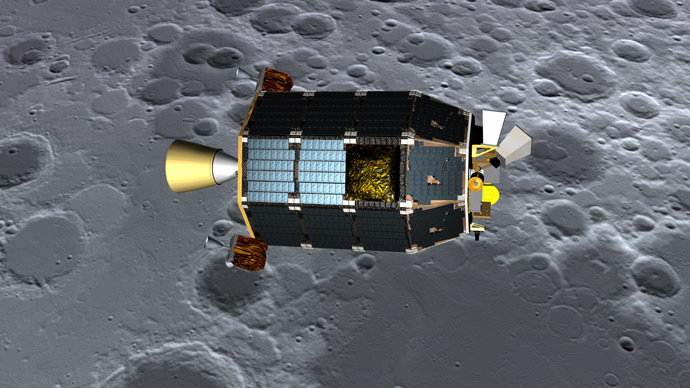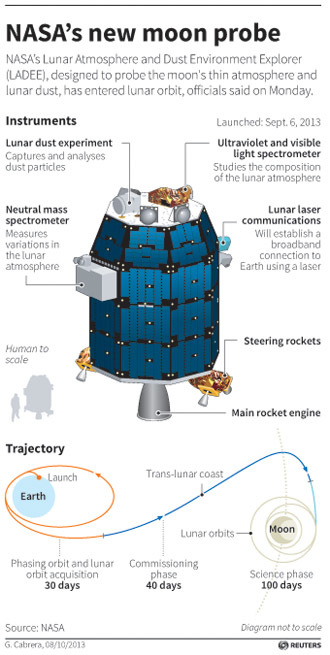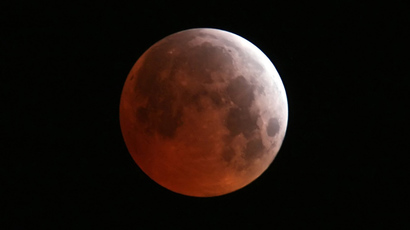NASA crashed LADEE spacecraft into moon at 3,600 mph

After spending months in space analyzing the lunar atmosphere, NASA’s latest robotic space explorer crashed and burned onto the moon’s surface.
Nothing sinister occurred to cause such a result, though – NASA crashed the vending-machine-sized probe on purpose following what it dubbed a successful mission.
In a statement released on Friday, the space agency said its Lunar Atmosphere and Dust Environment Explorer (LADEE) probe was traveling at extremely high speeds when it smashed into a mountain or carter on the moon. As a result, flight controllers believe the spacecraft likely vaporized on impact, and that little, if anything, remains.
"At the time of impact, LADEE was traveling at a speed of 3,600 miles per hour – about three times the speed of a high-powered rifle bullet," said NASA project scientist Rick Elphic. "There’s nothing gentle about impact at these speeds – it’s just a question of whether LADEE made a localized craterlet on a hillside or scattered debris across a flat area. It will be interesting to see what kind of feature LADEE has created."

Launched in September 2013, the $280 million explorer arrived in lunar orbit in October and began collecting atmospheric data in November. In addition to analyzing the moon’s atmosphere, LADEE was also home to a new type of communication system, one that uses lasers to transmit data instead of radio waves. With this technology, NASA was able to download information at a record-breaking 622 megabits-per-second.
The probe was expected to stay in service for 100 days before being crashed into the moon’s surface, but it ended up surviving even longer.
"Having flown through the eclipse and survived, the team is actually feeling very good," NASA project manager Butler Hine told the Associated Press.
With no more fuel left to keep itself in orbit, NASA had lowered the probe significantly by Thursday evening, when it was just 300 feet above the moon’s surface. Scientists estimate it’ll take a coup,e of days to pinpoint the exact sight of the crash. The agency may opt to take photos of the scene with its Lunar Reconnaissance Orbiter.
According to the New York Times, the only thing LADEE did not determine was why, before sunrise, astronomers saw glowing light on the lunar horizon. Since the moon’s atmosphere isn’t dense enough to scatter light, scientists speculated it might be caused by dust kicked up by electrostatic forces. LADEE, however, did not witness enough dust to account for such a glow, leaving the 40-year-old mystery unsolved.
Despite this, NASA’s Joan Salute said the probe still accomplished many things.
"LADEE was a mission of firsts, achieving yet another first by successfully flying more than 100 orbits at extremely low altitudes," Salute said in a statement. “Although a risky decision, we're already seeing evidence that the risk was worth taking.”














